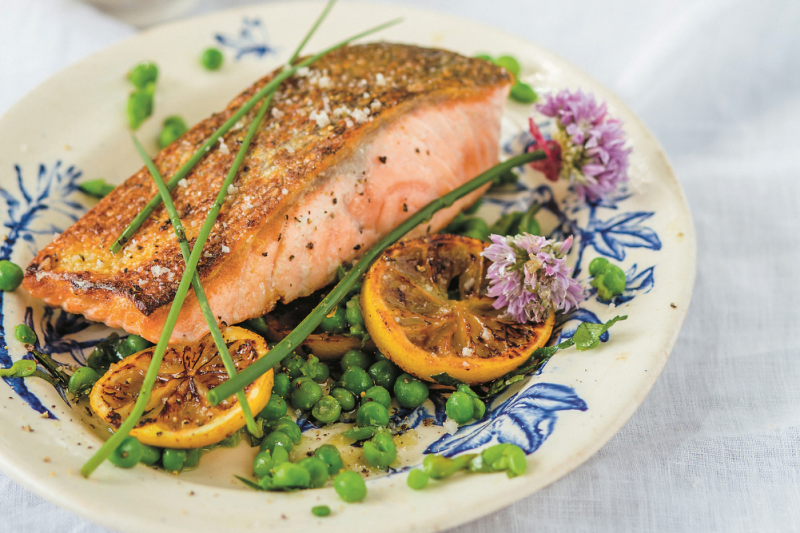The dos and don’ts of a healthy heart
The dos and don’ts of a healthy heart
If you have high cholesterol levels, elevated blood pressure or systemic inflammation, eating a healthy heart diet is essential for your wellbeing.
Servings
Prep time
Cook time
Recipe
Ingredients
- Saffron Aioli
- 2 cloves garlic, crushed
- 2 tsp lemon juice
- ½ tsp sea salt
2 egg yolks
1 tbsp Dijon mustard
Pinch saffron threads, soaked in a little lemon juice
1½ cups extra-virgin olive oil
Sea salt & freshly ground black pepper, to taste - Smashed Peas
- 200g frozen peas
50mL vegetable stock or filtered water
Pinch sea salt
30g butter
Juice 1 lemon
Freshly ground black pepper, to taste
1 tbsp olive oil
2 tbsp chopped flat-leaf parsley
Handful mint leaves
1 tbsp snipped chives - Salmon
- 4 salmon fillets, skin on
- Sea salt, for rubbing
- 2 tbsp olive oil
- 1 lemon, sliced & roasted, to serve (optional)
- Chives & edible flowers, to serve (optional)
Method
- To make the saffron aioli, whiz the garlic, lemon juice, salt, egg yolks and mustard in a food processor.
- Add the saffron and process again.
- With the motor still running, very slowly drizzle in the olive oil. The mixture will emulsify to a mayonnaise-like consistency. Season to taste.
- To make the smashed peas, put the peas and stock in a medium saucepan, season with salt and cook over medium–high heat, stirring occasionally, until the peas are tender. Remove from the heat, strain and stir in the butter.
- Gently mash the peas with a fork, then stir in the lemon juice and black pepper. Mix in the olive oil a little at a time, until the peas have the desired consistency. Fold in the herbs.
- Pat the salmon dry with paper towel and rub salt into the skin. Heat a large frying pan over medium–high heat, then add the olive oil and heat until the oil shimmers.
- Place the salmon fillets in the pan, skin side down, and press on them with a spatula to ensure all of the skin is in contact with the pan. Cook for 4-5 mins, until the skin is crispy and the salmon is still pink inside. Turn over with a spatula, turn off the heat and let the fish sit in the pan for no more than 1 min.
- Divide the smashed peas between four serving plates and top with the salmon and the roasted lemon slices, if using. Garnish with chives and edible flowers, if using, and serve with the aioli on the side.
Tried this recipe? Mention @wellbeing_magazine or tag #wbrecipe!







